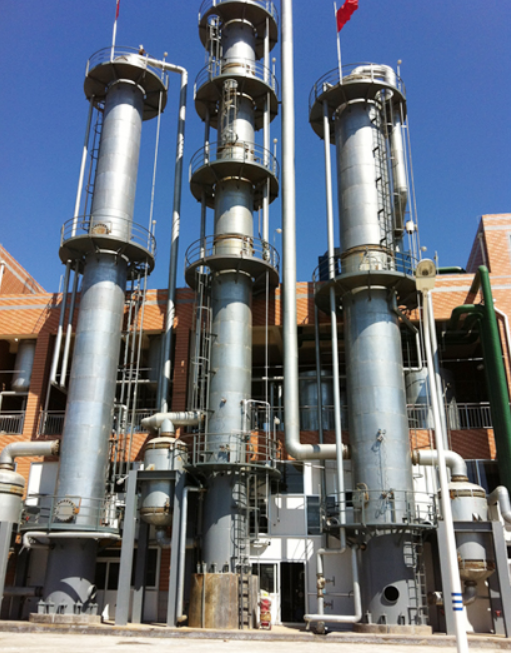An Air Separation Unit (ASU) is a critical industrial facility used for separating atmospheric air into its primary components: nitrogen, oxygen, and sometimes argon and other gases. ASUs employ various technologies, including cryogenic distillation and adsorption, to achieve this separation. Within ASUs, packing materials play a significant role in enhancing separation efficiency and facilitating the separation process.

Role of Packing in Air Separation Units
1. Distillation Columns
In ASUs utilizing cryogenic distillation for air separation, distillation columns are employed. These columns consist of structured packing or random packing materials. The primary role of packing in these columns is to facilitate efficient contact between the ascending vapor and descending liquid streams, enhancing the separation of air components.
2. Enhanced Surface Area
Packing materials are designed to offer a large surface area within the distillation columns. This increased surface area allows for greater interaction between the air components and the materials, enabling better mass transfer and separation efficiency.
3. Improved Contact Efficiency
Packing promotes intimate contact between the liquid and vapor phases. As the vapor ascends and the liquid descends within the column, the packing materials create numerous contact points, allowing for effective heat and mass transfer. This contact facilitates the separation of nitrogen, oxygen, and other gases based on their different boiling points.
4. Types of Packing Materials
Structured Packing: These are specifically engineered materials with well-defined geometries, such as corrugated sheets or honeycomb-like structures. Structured packing offers high surface area and ensures uniform distribution of gas and liquid flow, improving separation efficiency.
Random Packing: Random packing consists of irregularly shaped materials, such as spheres, rings, or saddles, loosely packed within the column. Their irregular shapes create void spaces that promote gas-liquid contact and separation.
5. Material Selection
Packing materials are chosen based on various factors including their resistance to temperature, pressure, and the specific gas separation requirements of the ASU. Common materials used include stainless steel, ceramics, plastics, and other metals capable of withstanding the harsh operating conditions.
6. Maintenance and Efficiency
Proper maintenance of packing materials is crucial to sustain separation efficiency in ASUs. Fouling or degradation of the packing can significantly reduce separation performance, necessitating periodic inspection, cleaning, or replacement of packing materials.
Challenges and Advancements
1. Efficiency Improvement
Ongoing research focuses on developing advanced packing materials to improve separation efficiency. This involves innovations in packing geometry, surface coatings, and material compositions aimed at enhancing mass transfer and reducing energy consumption.
2. Fouling and Degradation
One of the challenges associated with packing materials is the accumulation of contaminants or degradation over time, leading to reduced performance. Efforts are made to develop more robust and resistant materials that can withstand harsh operating conditions and resist fouling.
3. Energy Consumption
Efficiency improvements in ASUs are critical to reducing energy consumption. Optimizing the design and selection of packing materials to minimize pressure drop and enhance heat transfer can contribute to energy savings.
Conclusion
Packing materials play a vital role in air separation processes within ASUs, enabling efficient contact between gas and liquid phases to facilitate the separation of air components. Structured and random packing materials are designed to maximize surface area and promote effective mass transfer, enhancing separation efficiency. Ongoing research and advancements aim to improve the design and materials used for packing to enhance efficiency, reduce energy consumption, and ensure the reliable operation of Air Separation Units in various industries.
















